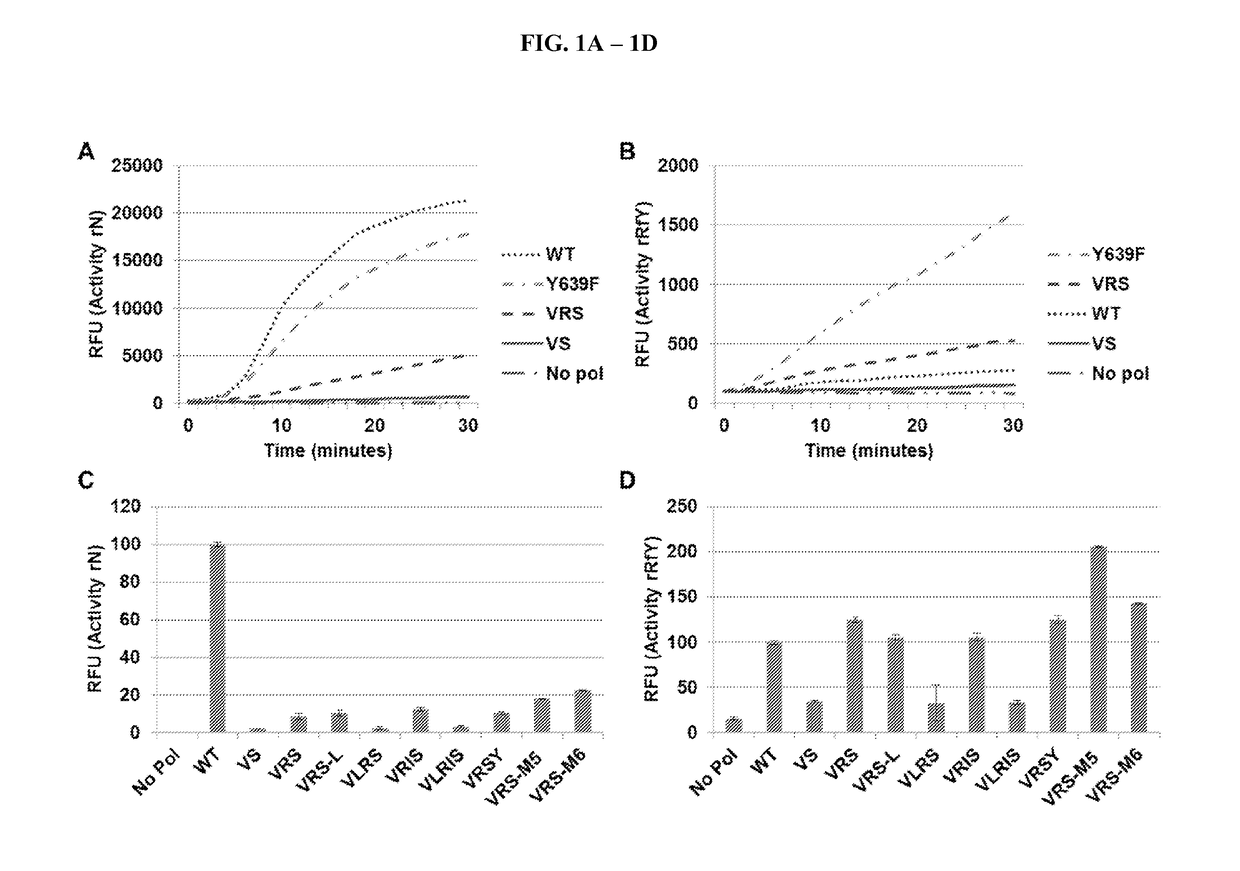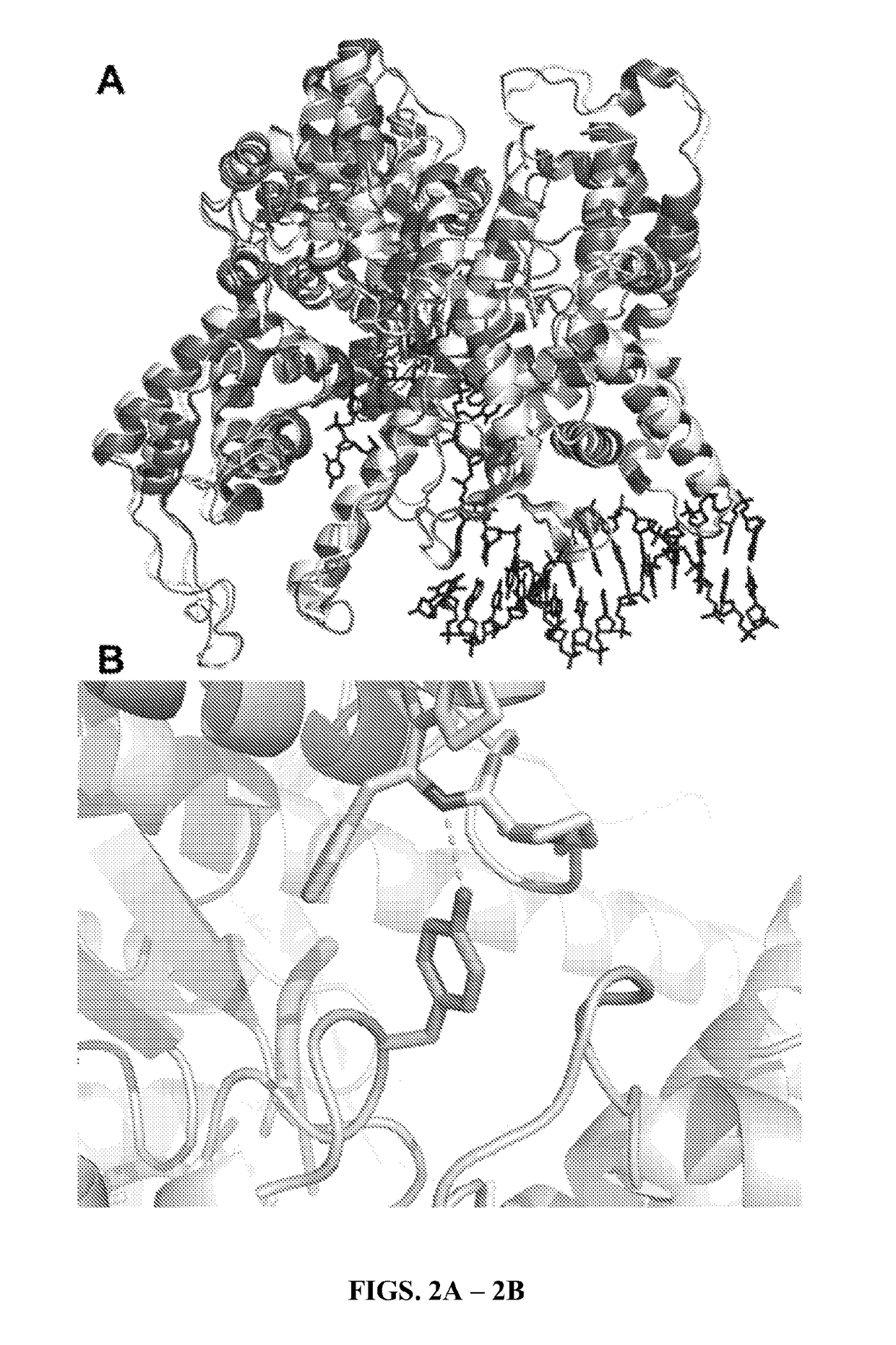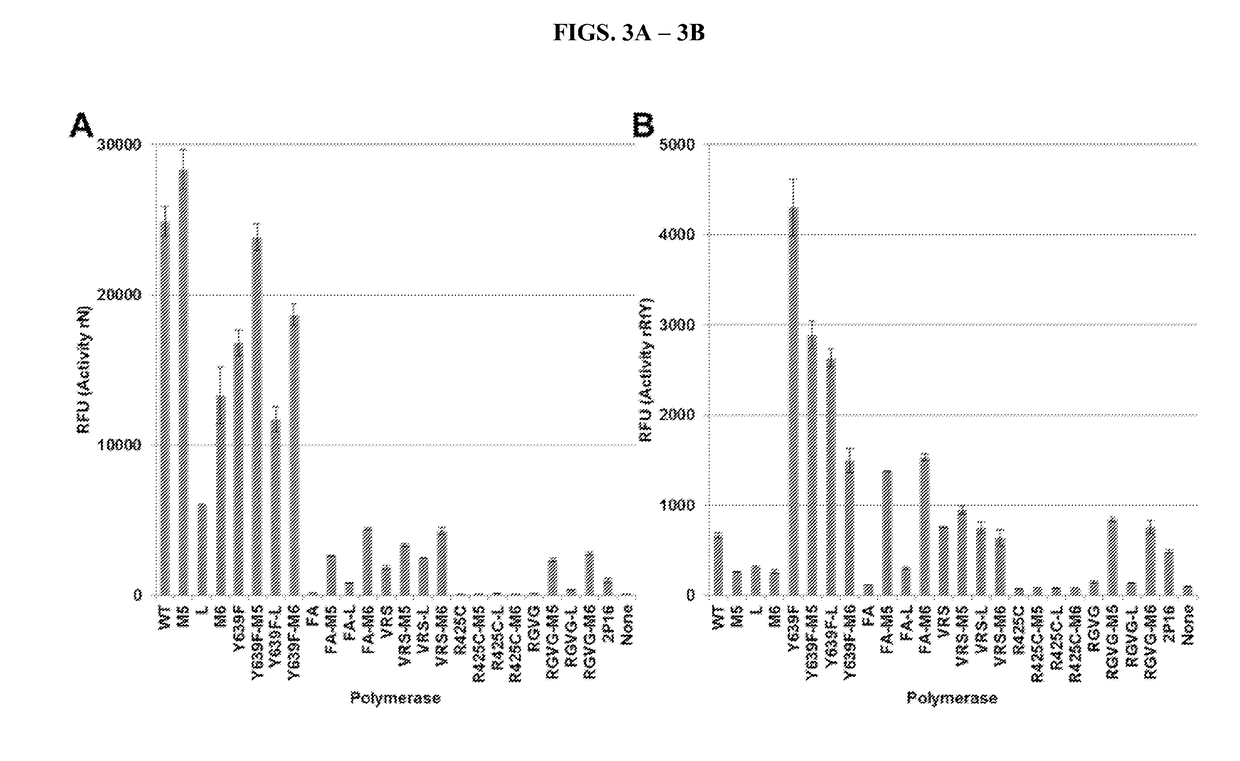T7 RNA polymerase variants with expanded substrate range and enhanced transcriptional yield
a polymerase and substrate technology, applied in the field of protein engineering, can solve the problems of unsuitable for many therapeutic and biotechnology functions, several of them suffer from low activity, rendering it less active overall, etc., and achieve the effect of expanding the substrate range and increasing activity
- Summary
- Abstract
- Description
- Claims
- Application Information
AI Technical Summary
Benefits of technology
Problems solved by technology
Method used
Image
Examples
example 1
Materials and Methods
Preparation of T7 RNA Polymerase Variants
[0034]The T7 RNA polymerase ORF was cloned into pQE-80L (Qiagen). All T7 RNA polymerase variants were derived from this plasmid either by Mega-primer PCR (Bryksin & Matsumura, 2010) or Isothermal assembly (Gibson, 2011). Plasmids were transformed into BL21-gold (Agilent) E. coli cells. Cells were grown in 2×YT media at 37° C. overnight. Subcultures were grown at 37° C. until reaching OD600 ˜0.7-0.8 at which point 1 mM IPTG was added. Cells were grown four hours at 37° C., pelleted, and frozen at −80′C. Pellets were resuspended in binding buffer (50 mM Tris-Hcl, pH8.0, 0.5 M NaCl, 5 mM imidazole). Resuspended cells were lysed via sonication on ice using 50% probe amplitude for 3 minutes (1s ON, 1s OFF). Cell debris was pelleted by centrifugation (30 min: 10,000 g). His-tagged T7 RNA polymerase was purified by immobilized metal affinity chromatography (IMAC). The lysate was run over 1 ml (bead volume) Ni-NTA (Fisher) gravit...
example 2
Stabilizing Mutations Increase the Activity of the T7 RNA Polymerase Mutant G542V H784S
[0040]Previous experiments selecting for RNA polymerases with altered substrate specificity (Chelliserrykattil & Ellington, 2004) focused on the four amino acids that are proximal to the incoming nucleotide (Cheetham, 1999; Temiakov, et al., 2004), and thus likely played a role in substrate recognition. One of the resulting mutants, called “VRS,” could incorporate 2′F-modified pyrimidines. VRS had mutations at two of the randomized residues (ie G542V and H784S). Interestingly, an H772R mutation also arose during the selection, despite H772 not being randomized. H772R is not near the substrate recognition domain, but has been seen in other selections for T7 RNA polymerase activity (Ellefson, et al., 2013; Dickinson, et al., 2013). To test whether H772R is a general stabilizing mutation, a derivative of VRS without H772R, termed “VS,” was constructed. Purified enzymes were tested for their ability t...
example 3
The “M5” Mutations Increase the Activity of Several T7 RNA Polymerase Substrate Specificity Mutants
[0042]The “M5” mutations arose in a T7 RNA polymerase selection for transcriptional activity at higher temperatures. In a wild type background, these mutations increase the half-life of enzyme at 50′C and allow for transcription at that temperature. The M5 protein was crystalized, and few gross morphological differences to the wild-type T7 RNA polymerase crystal (Cheetham, 1999) are apparent (FIG. 2A). There is, however, an added hydrogen bond made by F880Y, which may stabilize the two halves of the palm domain (FIG. 2B). It should be noted that the F880Y mutation is not sufficient to increase VRS activity (see VRSY in FIGS. 1C-1D).
[0043]It was then tested whether the M5 and M6 mutations could increase the activity of other T7 RNA polymerase mutants. Several known polymerases with altered ribose specificity namely WT, Y639F, FA, RGVG, VRS, and R425C (Table 1) were tested. To each of th...
PUM
| Property | Measurement | Unit |
|---|---|---|
| bead volume | aaaaa | aaaaa |
| pH | aaaaa | aaaaa |
| pH | aaaaa | aaaaa |
Abstract
Description
Claims
Application Information
 Login to View More
Login to View More - R&D
- Intellectual Property
- Life Sciences
- Materials
- Tech Scout
- Unparalleled Data Quality
- Higher Quality Content
- 60% Fewer Hallucinations
Browse by: Latest US Patents, China's latest patents, Technical Efficacy Thesaurus, Application Domain, Technology Topic, Popular Technical Reports.
© 2025 PatSnap. All rights reserved.Legal|Privacy policy|Modern Slavery Act Transparency Statement|Sitemap|About US| Contact US: help@patsnap.com



